The CR-V has been Honda’s best-selling compact SUV for over 20 years. Here’s what makes it an ideal buy.
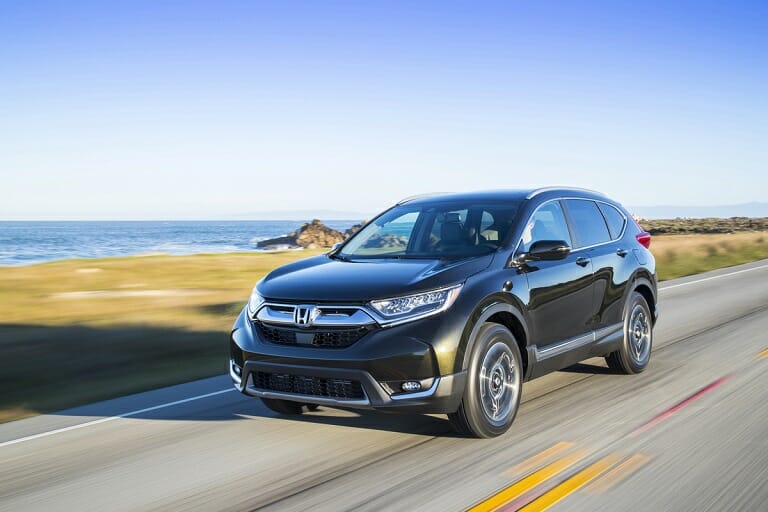
The Honda CR-V was introduced to the market in 1997. Originally, the CR-V was only offered in one trim, the base model LX. Surprisingly, due to the width of the original CR-V, it would be considered a luxury vehicle by the Japanese government. Not only is the CR-V Honda’s best-selling vehicle, but it’s also been the best-selling CUV in America for more than 20 years.
Furthermore, the CR-V has faced stiff competition for this accolade, competing with vehicles such as the Toyota RAV4 and Ford Escape.
Many don’t know what the CR-V stands for in the vehicle’s nameplate. According to Honda, CR- V stands for Comfortable Runabout Vehicle. Interestingly, the CR-V shares platforms with the Civic.
The CR-V fits comfortably in the Honda utility vehicle lineup, slotted between the smaller HR-V and the larger Pilot. The CR-V has been around for over 20 years and five generations, let’s find out why.
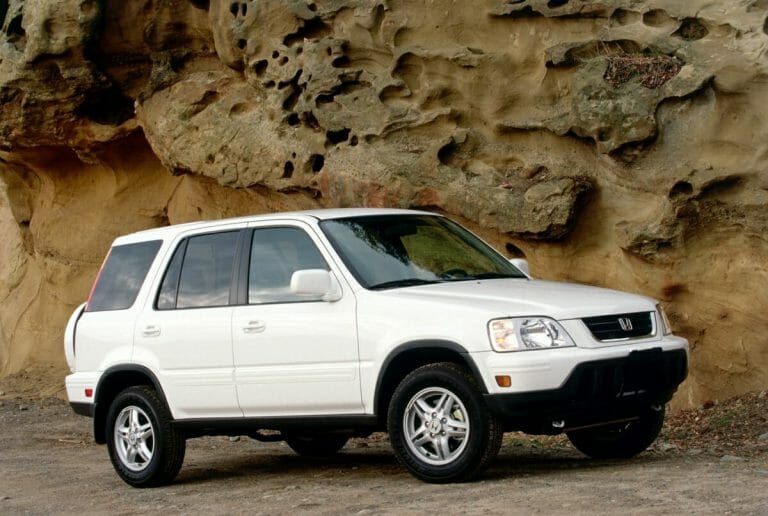
First-generation (1997-2001)
When the Honda CR-V was released for the 1997 model year it set the new standard for CUVs. To raise the standard, the CR-V came with things like standard all-wheel drive, a spacious interior, storage, and even a fold-out picnic table. That’s right, the CR-V came with a built-in picnic table for random picnicking.
Other standard equipment included: air conditioning with a filtration system, power windows, power door locks, rear window wiper and defogger, and an AM/FM stereo with a cassette player.
Upon release, the CR-V was powered by a 2L I4, also called the B20B engine, it produced 126 hp and 133 lb.-ft. of torque. This was similar to the engine found in the Acura Integra, however, it had a larger displacement to increase torque. The B20B was mated to a four-speed automatic transmission.
- For 1998, Honda released the EX-trim which brought with it an anti-lock-braking system (ABS), 15-inch alloy wheels, remote keyless entry, and a CD player. Hagen buying a CR-V, drivers were faced with two new options, being a new five-speed manual transmission and FWD.
- For 1999, the B20B would be replaced by the 2L I4 B20Z which produced 147 hp and 133 lb.-ft. of torque. The B20Z had a higher compression ratio than the B20B (9:6:1 vs 8:8:1) as well as both a new intake manifold and higher lift on the intake valves. Although performance increased on the new engine, the higher compression ratio allowed for the mpg to remain the same, 23 mpg combined for both the B20B and the B20Z. Other changes for 1999 included a revised column shifter with an overdrive button on the automatic CR-Vs, the passenger seat was equipped with an armrest, and the power window buttons were illuminated.
- For 2000, Honda introduced the new standard edition (SE) trim. The SE trim came with a leather interior, chrome accents, a CD/cassette combo, and a navigation system. On the outside, the SE had body-colored bumpers, side moldings, and a spare tire cover.
- For 2001, Honda made very insignificant changes. Changes included standard child seat-tether anchors for all CR-Vs, a new color was made available, and floor mats were standard on the EX and SE.
First-gen. CR-V: Problem Areas
Although the early generations are often considered the most reliable of the CR-Vs, they still have their problems. The Insurance Institute for Highway Safety (IIHS) gave the first generation a marginal safety score.
It scored this because the driver’s knees would be injured in a crash due to a lack of cushioning. It’s also worthwhile to note that because the CR-V was tall and skinny, it had an increased chance of rollover.
Naturally, due to the age of first-generation CR-Vs, there are several common problems. The sway bar links often go bad in them, this can be diagnosed by a creaking or popping noise when going over bumps.
Also, oil can leak around the valve covers and timing chain cover. This problem should be taken care of ASAP, if not, enough oil can leak that the motor can blow. Another common problem is the timing belt teeth wearing down.
When buying a first-generation CR-V, make sure to check with the previous owner to see when it was last changed. It’s been found that the exhaust valves can burn up if they are not adjusted every 30,000 miles.
Unsurprisingly, rust is a common problem. Common rust spots can be found on the undercarriage, the rear wheel wells, as well as the bottom of the doors. Lastly, the rear differential fluid can break down, causing the rear differential to stop functioning properly.
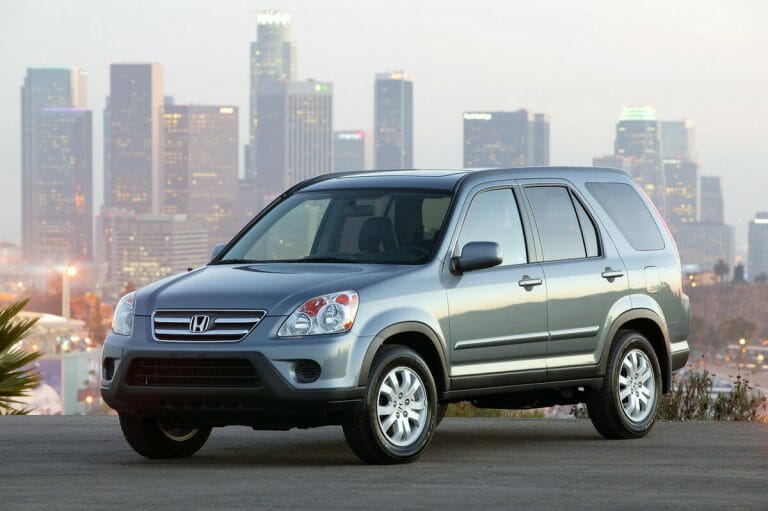
Second-generation (2002-2006)
The second-generation CR-V debuted in 2002 and like the previous generation was still based on its Civic counterpart and thankfully still had the fold-out picnic table. The all-new CR-V received a new 2.4L I4 engine, the K24A1 which produced 160 hp and 140 lb.-ft. of torque. Thanks to Honda’s i-VTEC system, the fuel economy of the second generation was the exact same as the last.
Honda also updated the four-speed automatic and five-speed manual transmissions. For this year, only the AWD vehicles would be able to receive the manual transmission, whereas any vehicle could receive the automatic transmission. It received Car and Driver’s best Small Sport-Utility Vehicle for both 2002 and 2003.
This was the first CR-V to be based on Honda’s Global Compact Platform, used on both the Civic and Acura RSX. Honda claims this increases torsional rigidity by 50% and bending rigidity by 30%.
In layman’s terms, this means it is not only safer in a crash and roomier on the inside, but also reduces noise, vibration, and harshness (NVH) leading to better ride quality.
Standard equipment included: air conditioning, power windows and locks, one-touch up/down driver window, a CD player, heater ducts in the rear, and two 12-volt accessory outlets. The classier EX received keyless-remote access, a power moonroof, ABS, and a better sound system with a CD changer.
In the name of safety, the CR-V came with dual pre-tensioners for the front seatbelts, headrests, three-point seatbelts for all five seating positions, dual-stage front airbags, side airbags for the EX-trim, and whiplash-reducing front seats. The CR-V received an IIHS best pick for its “good” ratings across the board.
- For 2005, the CR-V underwent a significant facelift. This added much needed standard equipment such as: redesigned headlights, a new front bumper, ABS, stability control, side airbags for front passengers, curtain airbags for front and rear occupants, strengthened B-pillars, minor interior restyling, new 16-inch wheels, and a new five-speed automatic transmission instead of the previous four-speed transmission. Honda brought back the SE trim as well with boasted heated leather seats, heated mirrors, leather-wrapped steering wheel and shifter, and body-color bumpers, side molding, door handles, and spare tire cover.
Second-gen. CR-V: Problem Areas
Due to the new safety features on the second-generation CR-V, the IIHS found that the CR-V is susceptible to high repair costs for even minor collisions.
While it’s a good thing that the vehicle is safer overall, it is still worth noting that even minor fender benders can lead to expensive repairs. Similar to the previous generation the rear differential fluid can break down, so it needs to be maintained regularly.
The most common problem with the second-generation CR-V is what’s called the Black Death. What this means is the AC compressor fails and contaminates the whole system, leading to a repair cost of near $1,600. Other less-expensive problems are O2 sensors failing, bad u-joints, and motor mounts going bad.
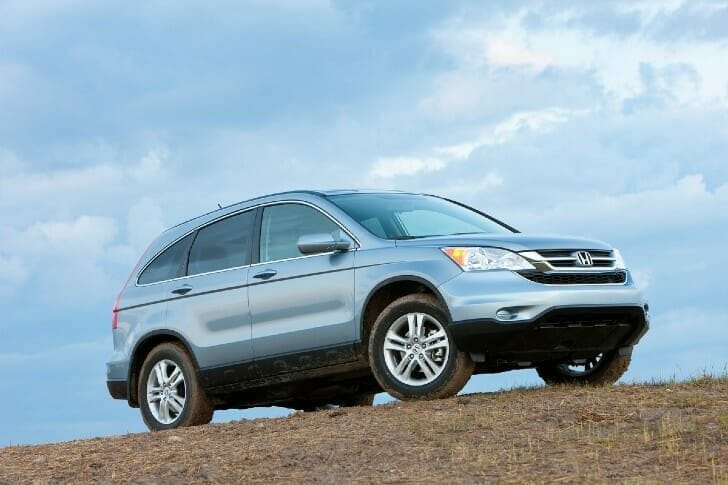
Third-generation (2007-2011)
The third-generation CR-V was the worst generation, because it lost its way as a rugged-looking SUV when it dropped the rear-mounted spare tire and lost some driving appeal when Honda announced the manual transmission would not be returning. We chalk this up to Honda making several changes to make the CR-V more “family-oriented.”
For example, the lift-gate would make it easier for a parent to open it with a child in hand, the rear doors opened to 90 degrees to make it easier to slot your offspring in the backseat, all rear seats have the LATCH system for car seats, and now there’s a conversation mirror for the parent who prefers watching their children to the road.
Ironically, in these efforts to make the CR-V more “family-friendly,” they got rid of the most family-friendly piece from the previous generations, the built-in picnic table. In addition to this, it had several mechanical issues and is considered the least reliable of all generations of the CR-V.
Now, let’s talk about what Honda did well with this new CR-V. The CR-V was powered by a new 2.4L I4 engine, the K24Z found on other Honda’s such as the Element and Accord.
This engine produced 166 hp and 161 lb.-ft. of torque and maintained the combined mpg of 23 from the previous versions. Honda also improved the handling on the CR-V, which may be attributed to the lower center of gravity, thanks to the spare tire no longer being on the back.
They also added several new upgrades to the interior such as an AUX jack (located in three, trim-dependent locations), nicer cloth upholstery, and several equipment upgrades on the EX-L.
Those who opt for the base model LX get 17-inch steel wheels, full power accessories, and a folding center tray. The EX will give buyers alloy wheels, body-color exterior trim, a moonroof, an upgraded six-speaker stereo with an in-dash CD changer, an outside temperature gauge, and a rear cargo shelf. Those who would splurge for the EX-L would get everything on the EX, plus heated outside mirrors, leather upholstery, heated front seats, XM Satellite Radio, and a fixed center console instead of the folding tray.
- For 2008, the EX-L trim gained an eight-way power seat, dual-zone climate control, and a premium sound system.
- For 2010, the CR-V added an extra 14 horsepower, gained one mpg, underwent minor styling changes, as well as offering Bluetooth and a USB port for the EX-L trim.
- For 2011, Honda brought back the SE trim yet again, which was slotted between the LX and EX trim and offered alloy wheels, rear privacy glass, and a six-speaker audio system with a six-CD changer.
Third-generation CR-V: Problem Areas
The third-generation CR-V shares some problems with previous generations such as the rear-differential fluid issue and faulty AC compressors.
However, it brings with it two new notable problems, it can leak steering fluid and sometimes the airbags don’t inflate properly. This is a problem because an under-inflated airbag can cause the occupant to hit their head off a hard surface leaving them concussed.
Perhaps the scariest, and most expensive problem with this CR-V is the unwanted acceleration issues. What happens is the driver pushes the brake, but the engine revs up, thus making the car accelerate instead of slowing down. I think it’s obvious how that can end in disaster, but to add insult to injury it can cost $5,000 to repair.
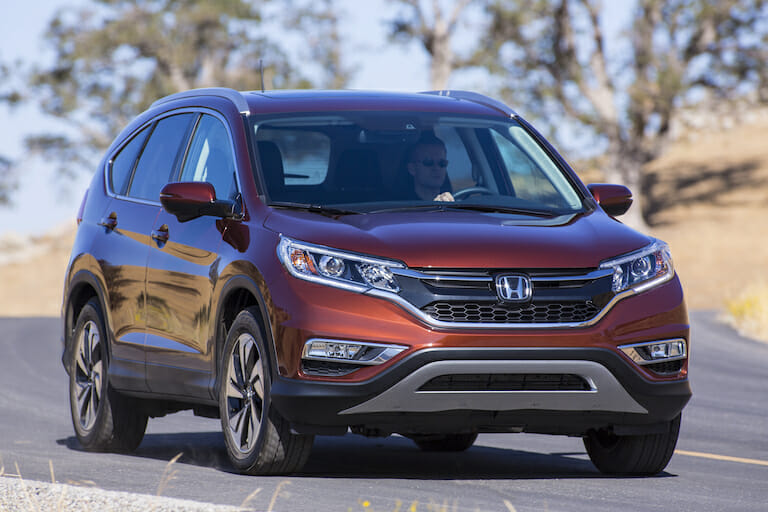
Fourth-generation (2012-2016)
The fourth-generation CR-V debuted in 2012. The new CR-V was again powered by a 2.4L I4, this one producing 185 hp and 163 lb.-ft. of torque. Despite the performance gains, Honda still managed to get three more mpg out of the upgraded CR-V engine. Honda improved both cabin noise and ride quality by adding additional insulation to the new CR-V and tweaking the suspension.
Standard equipment on the LX trim includes 16-inch steel wheels, automatic headlights, keyless entry, full power accessories, cruise control, a tilt-and-telescoping steering wheel, driver-seat height adjustment, 60/40-split rear seats, a rearview camera, a full-color multi-information display, steering wheel audio controls, a four-speaker sound system with a CD player, a Pandora interface, an AUX jack, a USB interface, and Bluetooth connectivity. The EX adds 17-inch alloy wheels, fog lights, a sunroof, rear privacy glass, a retractable cargo cover, and a six-speaker sound system.
Those who buy the EX-L will get roof rails, heated side mirrors, dual-zone automatic climate control, an eight-way power driver seat with power lumbar, leather upholstery, heated front seats, and a seven-speaker sound system with satellite radio.
With the EX-L you can also get either a navigation system or a rear entertainment system (RES).
- For 2015, the CR-V would gain a combined three mpg due to Honda putting the Accord’s direct-injected “Earth Dreams” I4 mated with a continuously variable transmission (CVT) in the CR-V. The EX-trim and above received a seven-inch touchscreen as well as Honda’s Lane Watch technology, a blind-spot monitor. Also new is exterior styling, Honda also added a Touring trim above the EX-L with additionaldriving assists.
- For 2016, Honda brought the SE trim back which upped the LX trim by adding 17-inchalloy wheels, rear privacy glass, and a security system.
Fourth-gen. CR-V: Problem Areas
The fourth-generation CR-V has received the most overall complaints on Car Complaints when compared to every other generation. Apparently, the 2015 CR-V shakes violently when idling.
Honda recommends updating the Powertrain Control Module (PCM) as well as having a tailgate damper lift kit installed. Though this was mostly successful, some owners have reported that this did not solve their issue. Other complaints include uncomfortable seats, rodents eating the Earth-friendly soy wiring, and the heater not working properly.
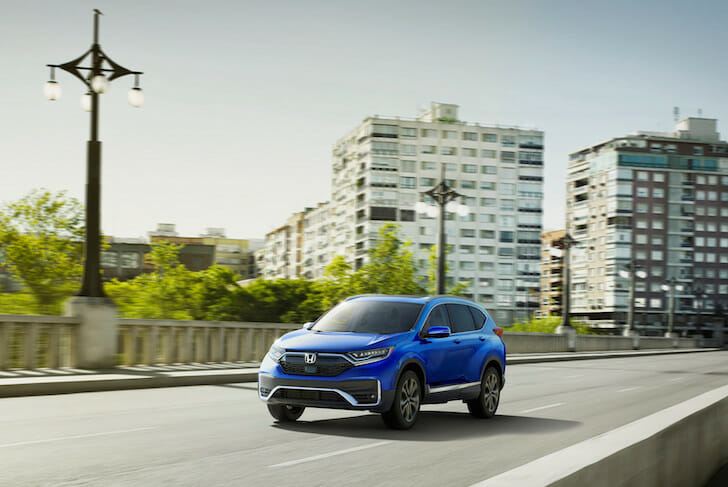
Fifth-generation (2017-Present)
Originally introduced as either a five-seat or seven-seat CUV, the fifth-generation CR-V debuted in 2017. Upon release, the standard engine was the 2.4L I4 “Earth Dreams” engine which produced 184 hp and 180 lb.-ft. of torque.
The 1.5L I4 turbo engine was offered, producing 190 hp and 179 lb.-ft. of torque. Both engines were offered with a CVT and the 1.5L I4 turbo offered an extra two mpg over the 2.4L I4 being 28 mpg combined and 30 mpg combined, respectively.
Honda completely redesigned the CR-V for 2017. They increased legroom and cargo space, made the CR-V both longer and wider to improve handling, and added 1.5-inches of ground clearance.
Similar to previous models, there are four trims offered: the LX, EX, EX-L, and Touring. The LX offers 17-inch alloy wheels, LED running lights, automatic climate control, cruise control, a height-adjustable driver seat, a five-inch color LCD screen, and a four-speaker audio system with Bluetooth and a USB port.
When leveling up to the EX, the CR-V gets the 1.5L I4 turbo engine, remote ignition, 18-inch wheels, fog lights, heated mirrors, body-color door handles and spoiler, rear privacy glass, a retractable cargo cover, keyless entry and remote start.
Along with a sunroof, dual-zone automatic climate control, power driver seat, heated front seats, a seven-inch touchscreen with Apple CarPlay and Android Audio, satellite radio, an upgraded backup camera with dynamic guidelines, Honda’s sensing suite (automatic high beams, blind-spot monitoring with rear cross-traffic alert, lane departure warning and intervention, adaptive cruise control, and forward-collision warning with automatic emergency braking), and second-row USB charging ports.
The EX-L brings a programmable-height power lift-gate, driver-seat memory settings, leather upholstery, a power passenger seat, a leather-wrapped steering wheel and shift knob, an auto-dimming rearview mirror, optional navigation system, and an eight-speaker audio system with HD radio.
At the top of the trims, the Touring offers LED headlights, roof rails, dual chrome exhaust tips, automatic wipers, hands-free functionality for the power lift-gate, ambient interior lighting, the navigation system, and a subwoofer for the audio system.
- For 2020, Honda refreshed the CR-V, bringing the first Hybrid CR-V to ever be sold in America. They replaced the standard 2.4L I4 with the 1.5L I4 turbo. Also, there are minor exterior styling changes, but most importantly Honda Sensing is now standard for all CR- Vs.
Fifth-gen. CR-V: Problem Areas
As the fifth generation is newer, it seems to have fewer problems than previous generations.
However, that does not mean it is problem-free. Similar to the fourth generation, it too is a victim of heating problems and rodents chewing its tasty soy wiring.
Unlike the fourth-generation CR-V, it brings new problems with the Honda Sensing such as sporadic auto braking, and the radar-guided cruise control gets “confused” sometimes. The costliest problem with the new CR-V is the fuel vapors seeping into the 1.5L I4 turbo engine and it doesn’t take an engineer to realize fuel and oil do not mix.
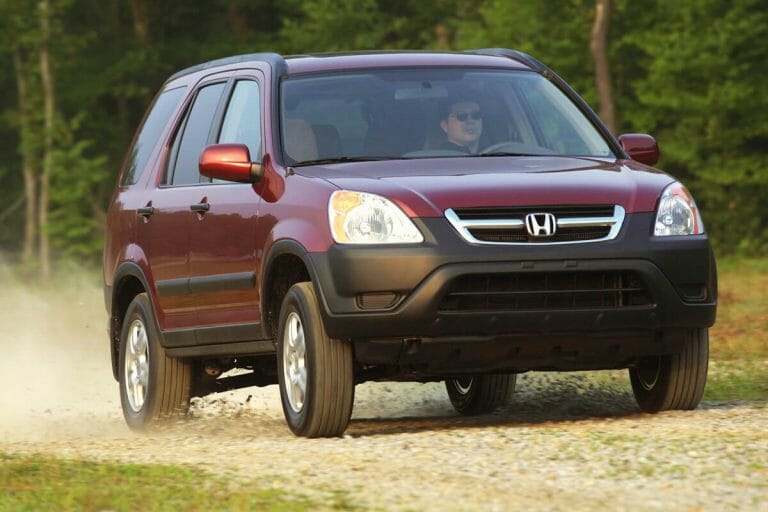
Best Honda CR-V Model Year to Buy
In order of preference if I were to buy a CR-V it would be the first generation followed by the second generation. They both have some mechanical issues, but it stays true to its roots as a rugged-looking CUV and the included picnic table and rear-mounted tire certainly sway my decision. The reason I would pick the first over the second generation is because of the AC compressor problem.
However, if you want to use the CR-V as a more useful family car or a “grocery-getter” I would not choose either of these two. I would pick the fifth generation followed by the third generation, again in order of preference.
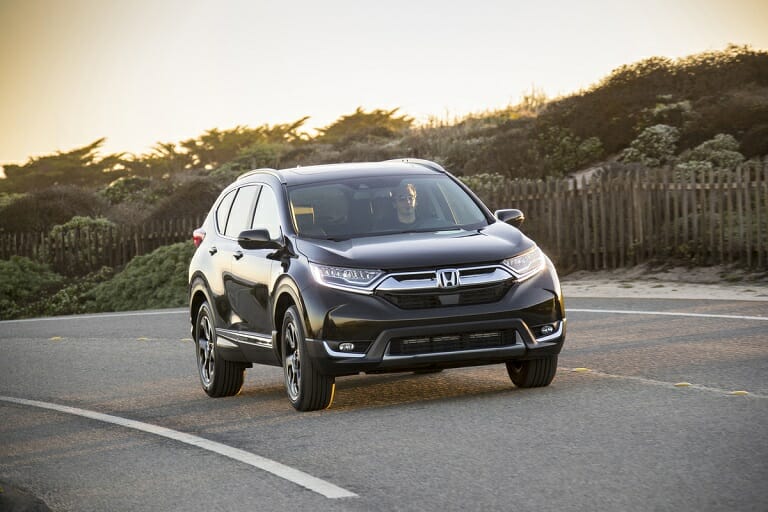
Should You Buy a Honda CR-V?
If you’re looking for a compact SUV, look no further, the Honda CR-V is as good as they come. Sure, it has its problems like all vehicles, but with this guide, you can pick a good one. The one thing that could make the CR-V even better is fitting it with a V6.
However, in a world where engines keep shrinking, I can safely say it’ll never happen. Nevertheless, with its plentiful cargo space, technology, and comfort, it’s truly a winner.
No longer am I surprised that this is the best-selling compact utility vehicle in America, let alone Honda’s best-selling car. The only problem I have with the new CR-V is that it doesn’t come with the factory picnic table like the first and second generations did.
However, even without the table, the CR-V is a fantastic car. If you’re in the market for a CR-V begin your search right here at Vehicle History.
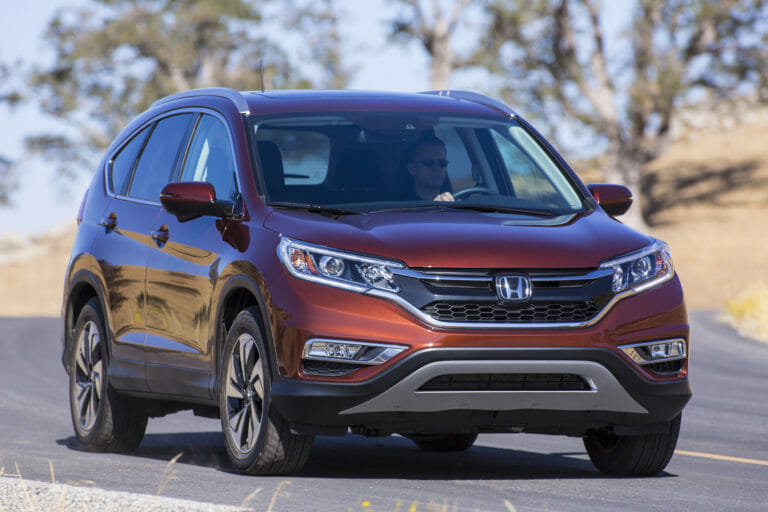
Worst Honda CR-V Model Year to Buy
As the fourth-generation CR-V is the most reported car on Car Complaints, I would steer clear of it altogether. If I were to choose to buy the third generation, I would pick one that was released before 2011 to avoid the issues that come with them.
Photos: Honda
